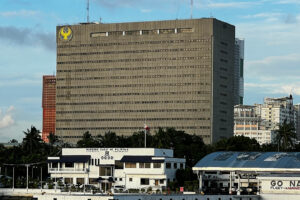SLOWER-THAN-EXPECTED October inflation gives the Bangko Sentral ng Pilipinas (BSP) leeway to continue its easing cycle to support the economy, analysts said.
“Sub-target inflation provides sufficient room for the BSP to cut policy rates by 25 basis points (bps) in its December meeting,” Metropolitan Bank & Trust Co.’s (Metrobank) Research and Market Strategy Department said in a report on Wednesday. “Continued economic risks add reason for the BSP to provide further springboard to growth.”
Metrobank Research added that it expects inflation to average 1.8% this year.
“With this backdrop, a 25-bp rate cut from the BSP in December remains plausible, more so if the third-quarter gross domestic product (GDP) print, due on Friday, continues to show signs of persistent economic weakness,” Bank of the Philippine Islands Lead Economist Emilio S. Neri, Jr. said in a commentary on Wednesday.
Headline inflation was at 1.7% in October, steady from the September clip but slowing from 2.3% in the same month a year ago.
This was a tad below the 1.8% median estimate in a BusinessWorld poll of 17 analysts and was within the BSP’s 1.4-2.2% forecast for the month.
October was also the eighth straight month that the consumer price index was below the central bank’s annual 2-4% target.
For the first 10 months, inflation averaged 1.7%, matching the BSP’s full-year forecast.
The central bank has slashed benchmark borrowing costs by a total of 175 bps since its easing cycle began in August 2024, with the policy rate now at an over three-year low of 4.75%.
After the Monetary Board delivered a fourth straight 25-bp reduction last month, BSP Governor Eli M. Remolona, Jr. said they could extend their rate cut cycle until next year to help cushion the economy amid the expected fallout from the corruption scandal surrounding state flood control projects that has affected both public and private investments.
Analysts believe that slower government spending due to the controversy may have led to weak third-quarter GDP growth. A BusinessWorld poll of 18 economists and analysts yielded a median estimate of a 5.3% expansion for the period, slower than the 5.5% expansion in the second quarter and below the government’s full-year growth target of 5.5%-6.5%.
Mr. Neri said below-potential economic growth may prompt the BSP to deliver two more rate cuts in the first half of 2026.
“The BSP may also choose to move in tandem with a potential Federal Reserve pivot, especially if the market prices in deeper US rate cuts once Fed Chair Jerome Powell’s term expires in May 2026,” he added.
“However, such a strategy, if materialized, raises the risk of policy overshooting, particularly if inflation rebounds later next year as base effects turn less favorable.”
He said bets that the BSP’s stance will remain accommodative versus a more cautious Fed could weigh on the peso due to the narrowing rate differential between the two central banks.
“The dollar-peso recently touched a record high amid strong import season demand, compounding the BSP’s dovish bias and persistent equity outflows. However, the seasonal inflow of remittances as we approach the Christmas holidays should provide temporary support, helping the peso end the year around P58.20.”
The peso closed at a new record low of P59.13 on Oct. 28.
Pantheon Macroeconomics Chief Emerging Asia Economist Miguel Chanco said in a separate note that they expect a cut in December and another reduction next first quarter as inflation is likely to stay below the BSP’s target range until then.
“Our 1.7% full-year inflation forecast for this year remains appropriate, and downside risks to our 2.4% projection for 2026 are intensifying,” he said. — Katherine K. Chan
